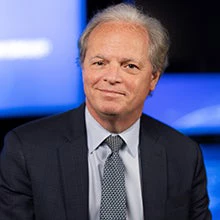 Children at a play area in Beira, Mozambique. In addition to building and rehabilitating roads , basins and drainage canals, the IDA-funded Cities and Climate Change Project also included a provision for play areas that cater to children in some of the city's most impoverished neighborhoods. © Sarah Farhat/World Bank
Children at a play area in Beira, Mozambique. In addition to building and rehabilitating roads , basins and drainage canals, the IDA-funded Cities and Climate Change Project also included a provision for play areas that cater to children in some of the city's most impoverished neighborhoods. © Sarah Farhat/World Bank
For over 70 years, the World Bank Group has successfully raised funds in the capital markets to invest in development projects. Through its arm for middle-income countries, the International Bank for Reconstruction and Development (IBRD), the World Bank Group funded public sector projects like roads, green energy, health or education systems; and through the International Finance Corporation (IFC), it provided capital to the private sector in developing countries to help businesses grow and provide jobs, taxes and other wider societal benefits.
Issuances from these World Bank Group institutions have long been popular among investors seeking safe, fixed income investment opportunities, and more recently also for their development purpose. Together, IBRD and IFC have raised over $900 bn USD equivalent since 1947 thanks to a conservative risk profile and predictable financial returns.
Since 1960, a third institution of the World Bank Group – the International Development Association (IDA) – had executed a different mandate. IDA was set up to provide grants, concessional finance and technical assistance to the low-income countries, with funds provided via shareholder donations. Donors meet every three years to replenish IDA resources and review its policy framework.
In 2015, following the adoption of the United Nations’ 17 Sustainable Development Goals (SDGs), there was growing recognition that existing financing mechanisms for development would be insufficient too deliver the ambitious agenda.
At a meeting of multilateral development banks (MBDs), it was agreed that the world must ramp up development financing by an order of magnitude — “from billions to trillions.” This meant thinking beyond aid, to private finance and unlocking developing countries’ own resources. Moreover, the international community recognized this was most pressing for the poorest countries that often have the biggest development needs.
IDA was expected to play its part and increase the level of assistance it provides. With a short time-frame in which to achieve the SDGs, additional sources of finance were urgently needed.
Although IDA had not previously raised funds from the markets, it was well-placed to do so based on several factors. First, it has a strong equity base of $163 billion, more than all the other MDBs combined. Second, it typically enjoys preferred creditor status and had an excellent track record of repayments on its concessional loans. Third, it has very strong shareholder support, as demonstrated by its history of three-yearly replenishments that had raised a total of over $270 billion since 1961. Fourth, IDA carries virtually no debt.
Finally, IDA offers investors a unique opportunity to support development projects in some of the world’s low-income countries, especially in Africa, which will receive around $45 billion in IDA funds in the three financial years between 2017 and 2020. As an increasing number of investors look to direct capital to products that fulfill their financial requirements and serve a positive social purpose, IDA is a compelling story.
Once the decision was made to tap the capital markets for additional funds to supplement donor resources, a compelling package was put together. IDA secured a AAA/Aaa rating (S&P/Moody’s) and its first bond, issued in April 2018, was oversubscribed by four times, raising US$1.5 billion to address some of the most pressing development issues.
The successful outcome can be viewed from several viewpoints. First, it has leveraged donor resources so that every $1 in partner contributions generates about $3 in spending authority. Second, it has helped investors add assets to their portfolios that significantly scale up support toward achieving the SDGs and contribute to global development. Most importantly, it means that millions more people will benefit from IDA programs that build infrastructure and public services like schools and health clinics in some of the world’s poorest places.
Since the first issuance, IDA has enhanced its borrowing program to offer short-term debt instruments, reaching an outstanding amount of $1.9 billion as of June 30, 2019. These volumes are only a start. Additional planned issuances in the coming years are in the tens of billions of dollars, a conservative estimate in line with IDA’s large capital base and its strong support from its shareholders.
Clearly, this success is a tribute to IDA’s strong track record in delivering measurable and impactful results in low-income countries. We also believe our success is due to our approach to sustainable investing and achieving a positive impact.
People everywhere are rightly concerned by a broad range of development issues, which makes IDA an exciting investment. IDA seeks to improve living standards in low-income countries through a comprehensive set of interventions that include policy reforms that stimulate growth and private sector development, building infrastructure to help farmers bring their products to market, and building energy systems that increase electricity access for households and small businesses. Interventions also address basic human development needs that range from supporting primary, secondary and higher education, through to strengthening health systems and providing social safety nets for the needy. And, IDA is at the frontline of supporting countries that go through crises, be it those caused by natural disasters or by war and violence, and its support is directed to building resilience and addressing the causes of fragility and conflict. In short, investments that promote hope for a better future.
This broad development agenda, and IDA’s ability to touch the lives of many people seeking a better life in low-income countries, enables investors to generate returns while joining the global coalition that aims to achieve the SDGs. This is a sweet spot that IDA seeks to occupy and broaden.
At the World Bank Group, we have long history of working with the capital markets to raise financing for development projects. This approach was pioneered by IBRD, and later by IFC. With IDA joining IBRD and IFC as a premier impact issuer in the capital markets, investors can do well and do good, knowing that their capital is at work in the low-income countries where they may otherwise not have the opportunity to invest.
This blog was originally published in Capital Finance International.


Join the Conversation